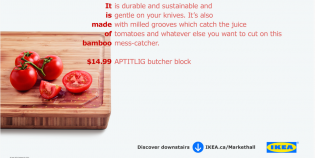Anyone watching the Sochi Games on CBC likely saw one of 20 short, simple videos about the science behind the Olympics. They’re the product of YouTube phenoms Gregory Brown and Mitchell Moffit. The duo launched the AsapScience channel on YouTube midway through 2012 and now have more than 2 million subscribers. They’ve produced more than 70 videos that have amassed more than 187 million views. “Which came first—The Chicken or the Egg?” has been viewed more than 14 million times.
Brown shares some tips on growing an online series and producing videos that people want to share.
Be consistent
AsapScience posts a new simply animated and narrated video every week. “People need to know what they can expect and [when] they’re going to get new content if they’re going to subscribe,” says Brown.
Keep it simple
“Our whiteboard animation is meant to make you feel like ‘This is easy, I can get this.’ It seems cartoony and childish and that’s a way to help people be less scared of the content.” AsapScience uses a whiteboard, marker, tripod and two computers. “You don’t need much; it’s more about the idea and creating a community.” Think about shareability: does your topic create conversation?
This ain’t TV, don’t overproduce
“It’s YouTube – it has that name for a reason,” says Brown. “It’s supposed to represent the average person.” Make your videos feel as though they’re more spur of the moment and thrown together. “This medium lends itself to that DIY feel.”
Watch the calendar
Brown says the AsapScience videos are often released on Sundays. “It’s the day of rest… people tend to be online.” However, blogs are more likely to pick up videos that Moffit and Brown release on Wednesdays or Thursdays. They avoid posting on Mondays, Fridays and Saturdays.
Give viewers clarity on costs
AsapScience posted a one-hour holiday video of an illustrated Yule log. What was meant to be festive brought out the Grinch in followers expecting a standard AsapScience tutorial. “There are millions of people that watch our content with data because they’re using their mobile,” says Brown. Logging into the lengthy video cost people money and they got upset. Lesson learned: the video should have been better explained. “We should have made the title ‘This is an hour-long Yule log,’” he says.
This story originally appeared in the March 2014 issue of Marketing, available now to subscribers both in print and on your iPad.










